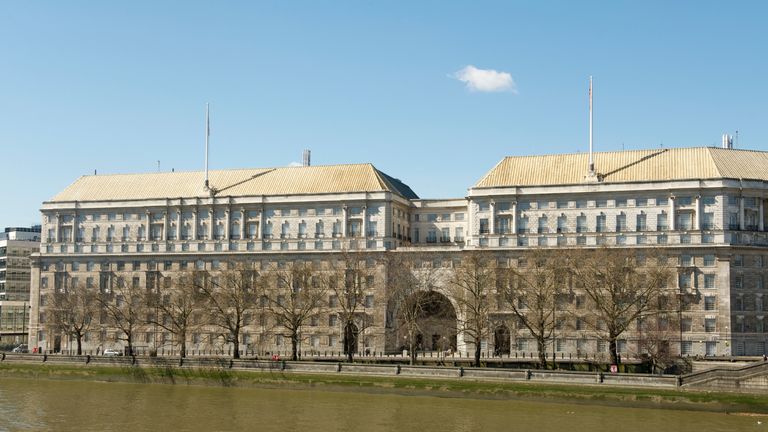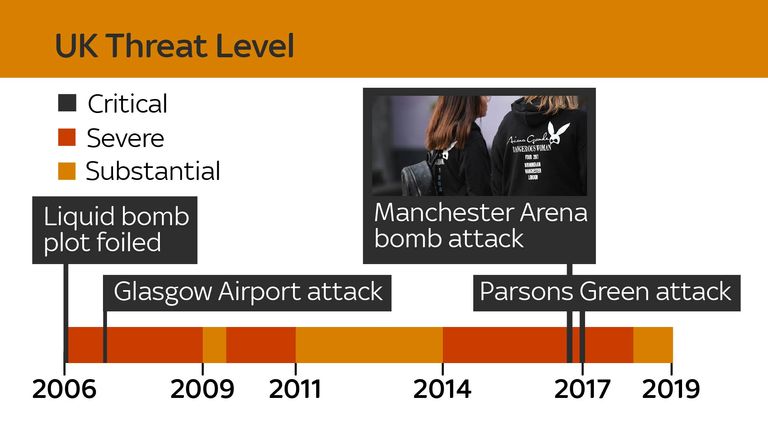Threat levels are designed to give a broad indication of the likelihood of a terrorist attack.
There are five different threat levels, with the Joint Terrorism Analysis Centre (JTAC) responsible for deciding at which level the UK should sit.
The five terror threat levels are:
Low – an attack is highly unlikely
Moderate – an attack is possible, but not likely
Substantial – an attack is likely
Severe – an attack is highly likely. This is the UK’s current level.
Critical – an attack is highly likely in the near future
JTAC is based at MI5’s headquarters in London and is comprised of representatives from 16 government departments and agencies
It brings together counter-terror experts from the police, government and security agencies.
JTAC also works especially closely with MI5’s international counter-terrorism branch, which manages investigations into terrorist activity in the UK.
In deciding on the UK’s threat level, JTAC considers:
- The level and nature of current terrorist activity, in comparison with events in other countries and previous attacks
- What is known about the capabilities of the terrorists in question and the method they may use based on previous attacks or from intelligence
- The overall aims of the terrorists and the ways they may achieve them including what sort of targets they would consider attacking
- How close an attack might be to fruition.
Prior to Tuesday’s move to raise the threat level to “severe”, the UK’s threat level had been at “substantial” since November last year.
This was the first time it had been lowered from “severe” for five years.
The “critical” level was last reached in September 2017, in the wake of the Parsons Green train bombing.
A separate threat level is provided for Northern Ireland-related terrorism in Northern Ireland.
This also stands at “severe”.


